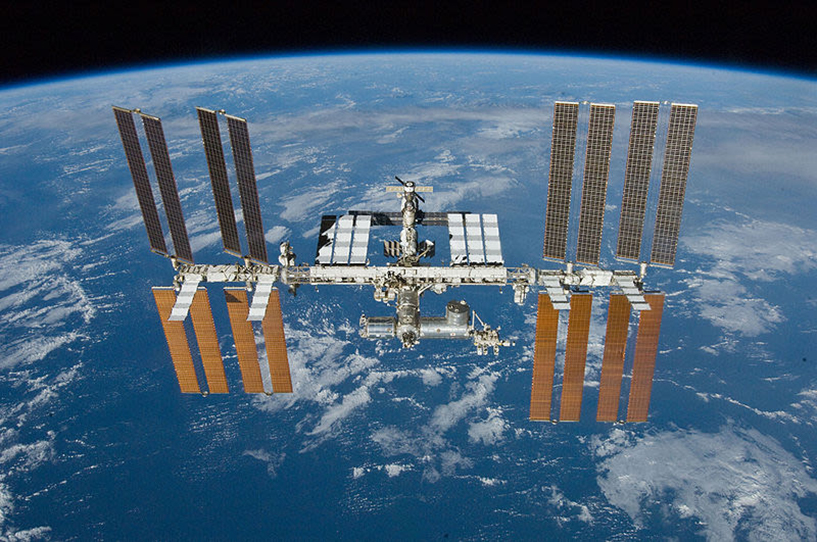 As of September 2, 2020, the new FM ISS Crossband repeater on board the International Space Station is activated. This is great news as it has been quite a while since anything significant has happened with Ham radio on board the ISS. Early reports indicate that the receiver is quite sensitive and can be used with just an handheld such as a Baofeng.
As of September 2, 2020, the new FM ISS Crossband repeater on board the International Space Station is activated. This is great news as it has been quite a while since anything significant has happened with Ham radio on board the ISS. Early reports indicate that the receiver is quite sensitive and can be used with just an handheld such as a Baofeng.
If you have never done any space communications via ham radio, there are some things to get acquainted with. The most important one is Doppler Shift. This can be a bit tricky. What is happening is that as ISS is moving and transmitting, you have to have to adjust your receive/downlink frequency. It is the same phenomenon as a passing train blowing its whistle, and you hear the tone of the whistle drop as it passes by you. In the case of the ISS, what you have to do is to listen a little bit higher when it is coming at you. As it is more overhead, you will hear it become noisy in your receiver. Just tune down 5 kHz, and you wil hear it. As the ISS moves away from you, you will have to tune down another 5 kHz.
The new crossband repeater on the ISS has an uplink frequency of 145.990 mHz and a downlink frequency of 437.800 mHz. In order to access the crossband repeater, it requires a 67 Hz tone on your radio. Also this is an FM repeater.
The best way to handle doppler is to pre-program the frequencies into your radio. I use the Chirp program. Its free and open source. This is what I use for my Yaesu FT-857D as well as my various handhelds like my Baofeng radios. You can download Chirp here if you don’t already have it.
Below is a screenshot of a portion of my chirp file for my FT-857. I have programmed 5 channels for the ISS Crossband Repeater. This allows me to easily adjust for doppler as things get quite busy when working the ISS Crossband repeater.

Some items to note, I gave each channel a specific name. Obviously it starts with ISS so I know what satellite I am dealing with. In addition I also added RP for Repeater. The reason for this is that there are other ham radio rigs on board the ISS such as APRS and I didn’t want to get confused. Additionally I added a lower case letter at the end.
So at the beginning of the ISS pass, I start out on the channel labeled ISS RPa and listen. Sometimes on a low pass I will toggle between ISS RPa and ISS RPb since the affect of Doppler isn’t as pronounced on a low pass as it is on a more overhead pass.
Speaking of listening, its best to run your radio unsquelched. In the past I have missed passes of other satellites because I had my radio squelched. Even though unsquelched can be annoying, it does give you the best chance for success in working the ISS crossband repeater.
Once your radio is programmed, the next problem is knowing when the ISS is visible. There are several satellite tracking programs available for download. Being a Linux guy, I use gpredict. Its free and open source. There are other windows and MAC based satellite tracking programs as well. Doing a google search and you will find several for whatever computer you are using.
Another option if you don’t want to download and install software is to use N2YO’s Satellite page for the ISS. There are also apps for android and iPhone to tracking satellites as well.
One thing I do when working the ISS crossband repeater is record the pass. This helps with logging as it is very fast paced and its quite easy to mis-write a call.
Hope to catch you on the ISS repeater someday!
This article was originally posted on www.mikestechblog.com Any reproduction on any other site is prohibited and a violation of copyright laws
Hey thanks for the tips .
Had a great pass this eve 9/17, it was visible for most of the pass here on the left coast.
Heard calls going up but nothing on the down link.
I’ll keep trying !
73 KF6VVP
Thanks for coming to my blog. Keep trying. Once you make a QSO its quite exhilarating.
73’s — Mike
Thank you! These were the clearest instructions I found for a noob.
Thank you! Have fun with the ISS Crossband Repeater — Mike
Thanks for sharing
Glad to help! Satellites are fun – I just looked at your blog post about your first attempt. I too have an Arrow antenna. They are great!
Hope to catch you on one of the sats someday!
— Mike